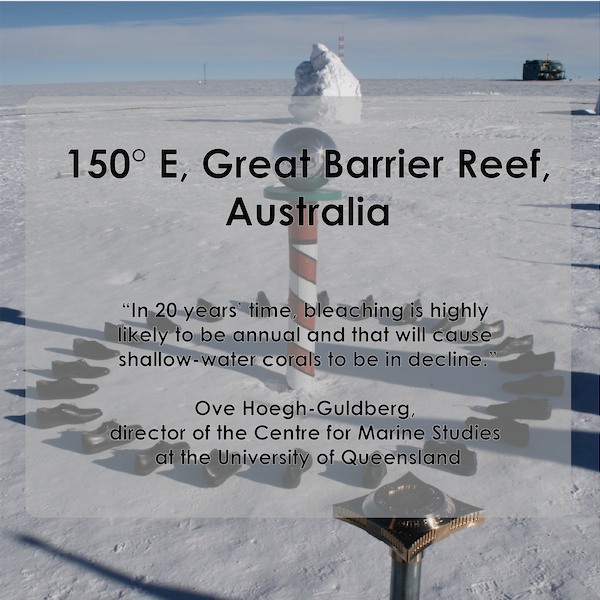
Home » 2007 » Longitudinal Installation » 24 Global Voices » 150° E, Great Barrier Reef, Australia

“In 20 years’ time, bleaching is highly likely to be annual and that will cause shallow-water corals to be in decline. We need to start working out how we can help people who rely on it for their income. It’s really quite a stunning fact.”
— Ove Hoegh-Guldberg, director of the Centre for Marine Studies at the University of Queensland
Professor Hoegh-Guldberg is deeply-motivated by a desire to communicate science effectively, to undertake game-changing research, and to find high-impact solutions to address several of the most pressing challenges facing humanity worldwide. This includes climate change, food security, clean energy, and population growth. As a biologist and climate scientist specializing in coral reefs, Hoegh-Guldberg reported back in 2006 that coral bleaching would become a yearly event due to climate change, impacting Australia’s coral population.
Coral bleaching can be caused by several different stresses, but the main one is the increase in sea surface temperatures. When temperatures get hotter, the coral releases algae that live under its surface. This algae is what feeds the coral and gives it its beautiful colors. Over time and after losing enough algae, the coral polyps can die.
Bleaching has now taken over most of the coral in the Great Barrier Reef and impacts all of them, causing a large die-off every year. As the oceans get warmer, the bleaching will continue to get drastically worse over time. Reefs protect shorelines across the globe in storms and are home to many different types of marine life. If we don’t get this issue under control, it will leave a sad and lasting impact on everyone, especially those in coastal communities around the world.